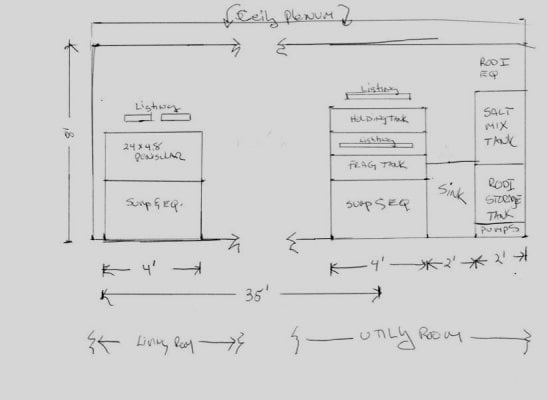I am am trying to decide if there is any reliable way for a display tank and a fish room system to share sumps that require all plumbing to go through the ceiling plenum between the two rooms. I am on slab on grade and do not have a common wall between where the living room display tank and where i have space for a ”fish” room. If possible I would like the larger combined water volume to minimize duplicating equipment and more water stability.
The only thing I can think of is two synchronized loops, but the question is how to keep them synchronized? water sensors and hydros controllers maybe? Or is there a solution I am just not thinking of?

The only thing I can think of is two synchronized loops, but the question is how to keep them synchronized? water sensors and hydros controllers maybe? Or is there a solution I am just not thinking of?















